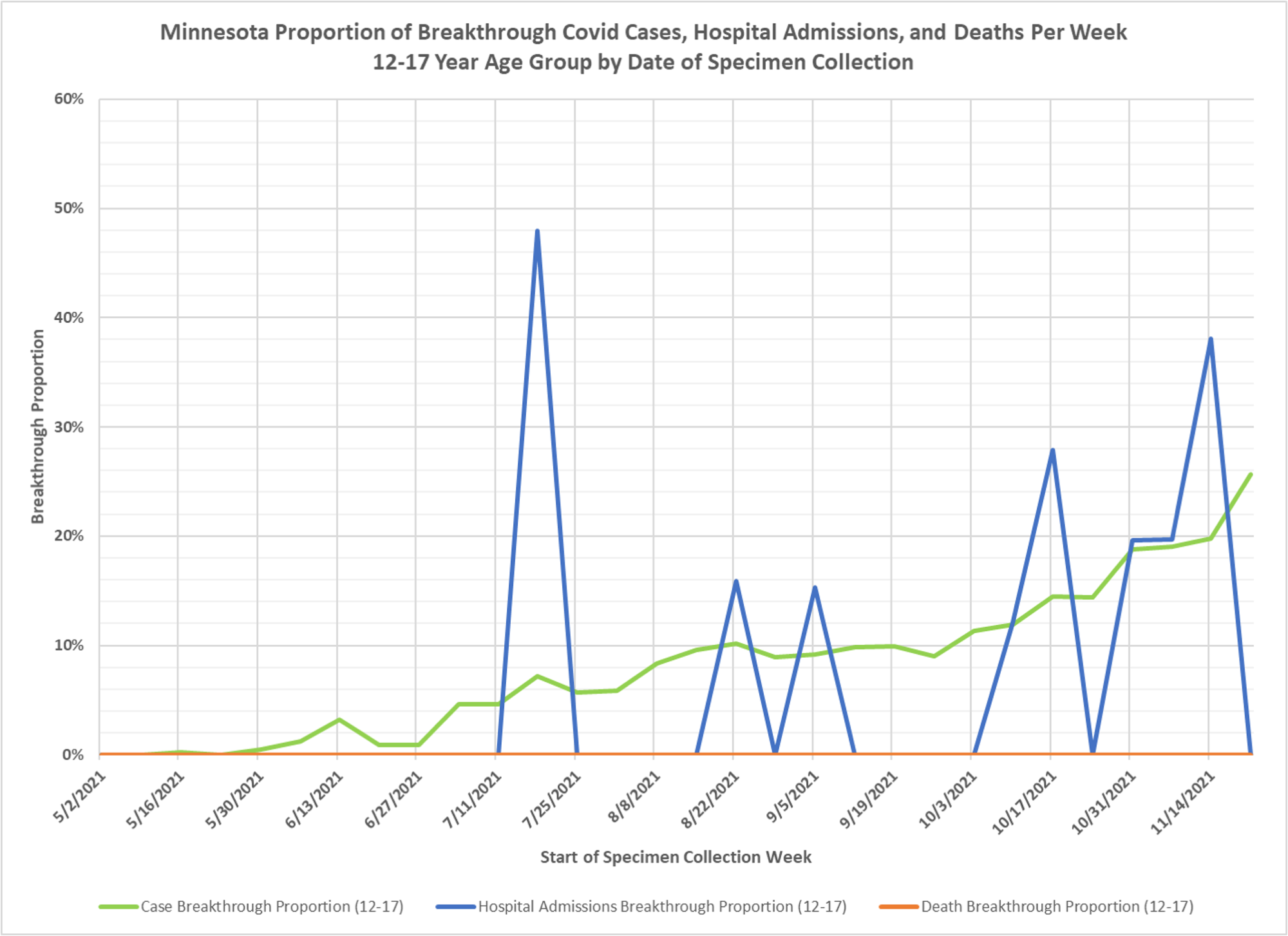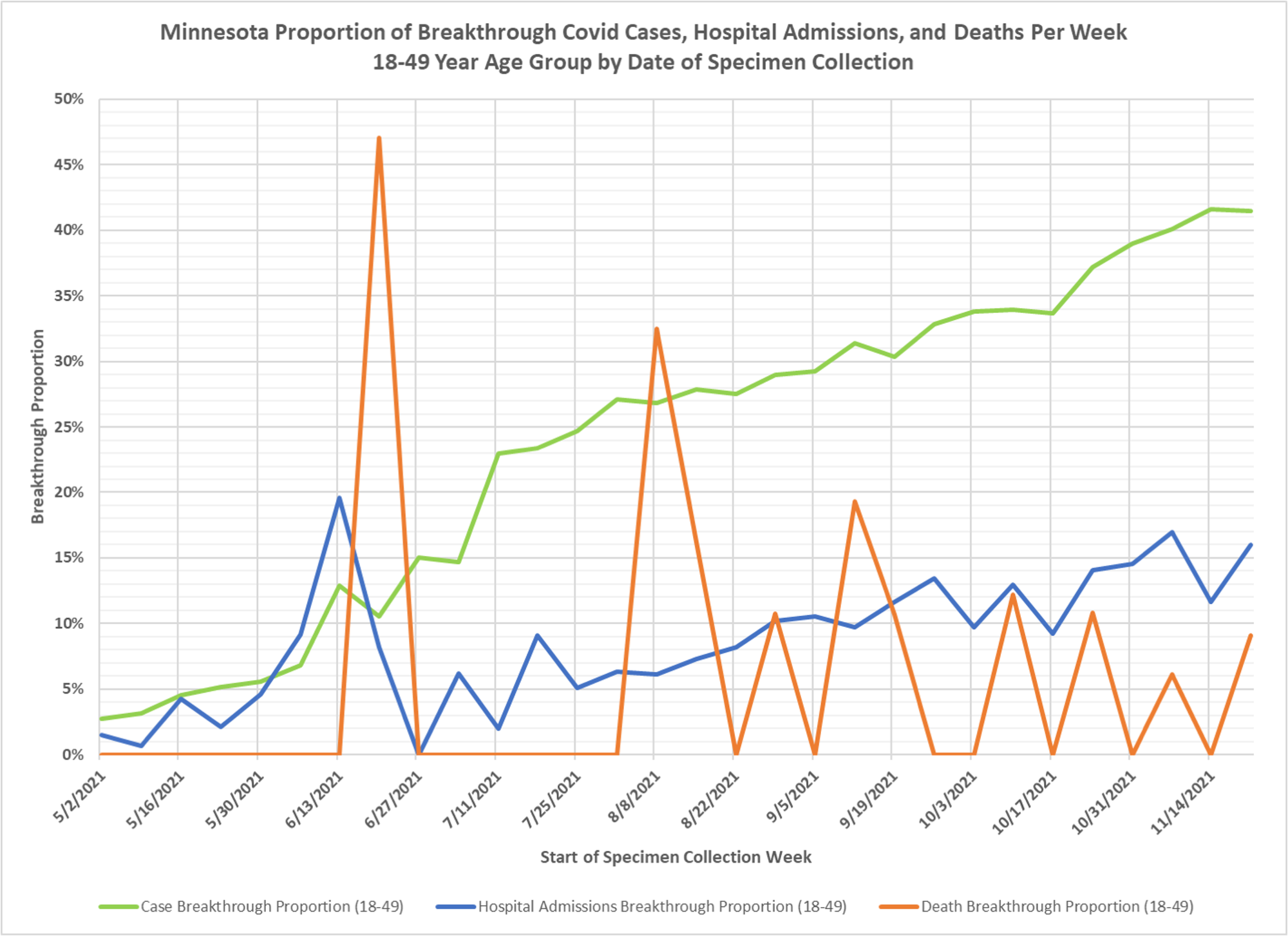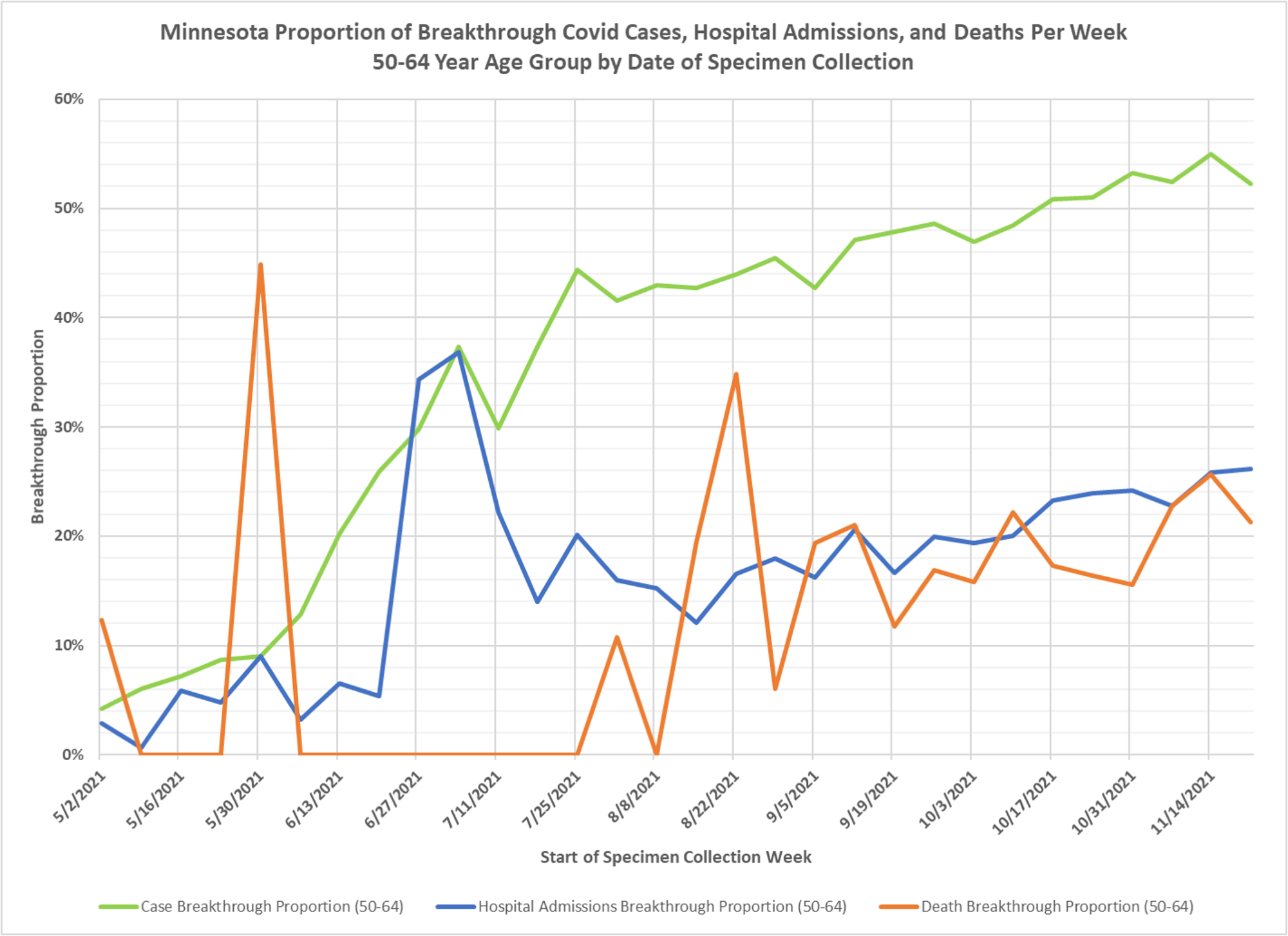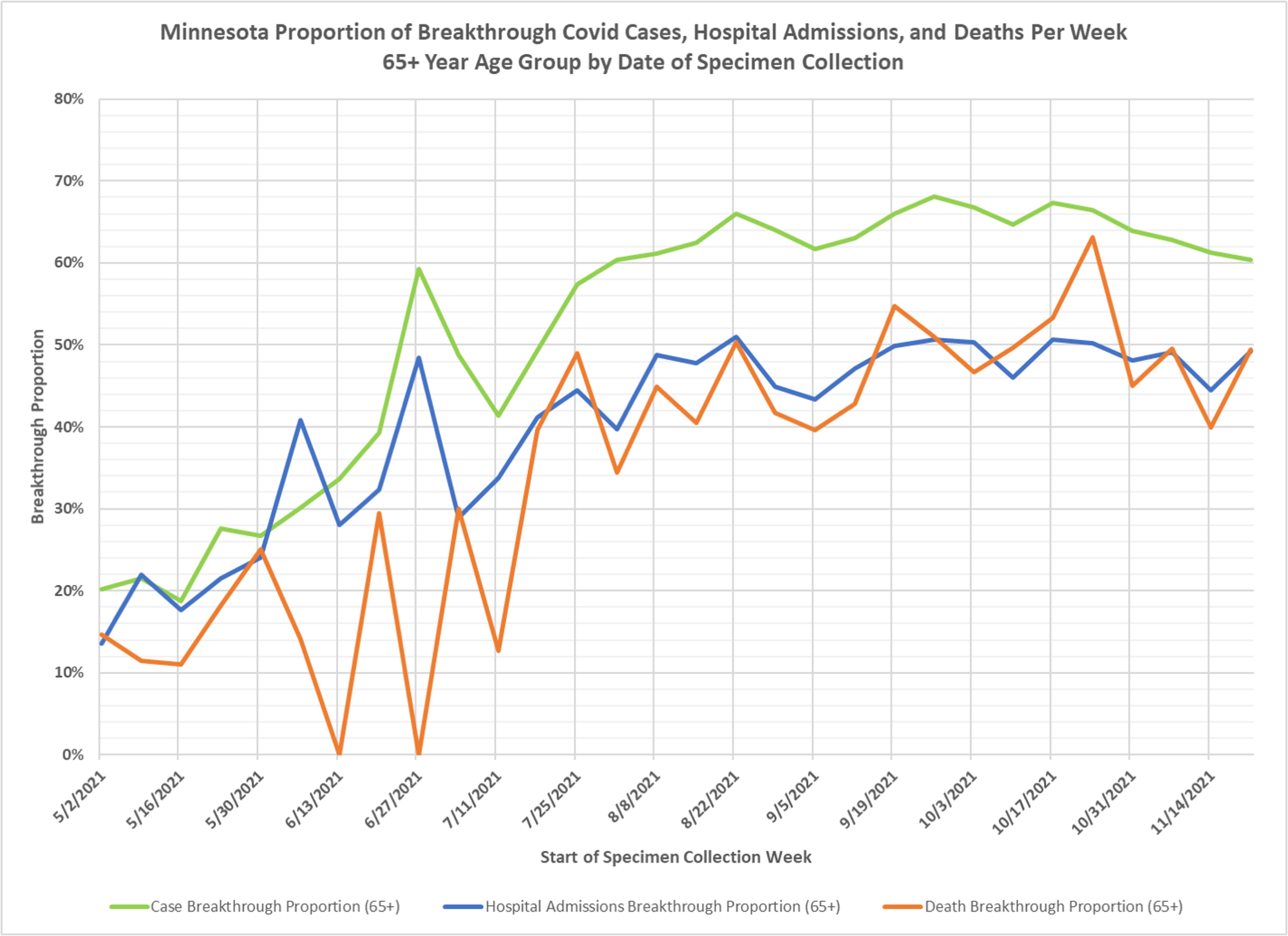This analysis of proportions of events by age group is updated with the corrected data issued by DOH today. These proportion analyses have value, as I repeatedly say, to see where resource demand is coming from, to see if there are sufficient numbers of breakthru events to continue feeding the media’s and politician’s terror campaign and they do tell you something about case rates. The relative proportions of cases, hosps and deaths is informative, because if cases are 50% vaxed, but hosps are only 35% vaxed, the case rate for the vaxed must be lower than that for the unvaxed. Dave’s notes on data sources and methods:
1. These charts display the proportion of weekly cases, hospital admissions, and deaths which are breakthrough events. Breakthrough cases are considered to be Covid positive cases, admissions, or deaths which occur in a person who completed their vaccination series at least 14 days before the positive test.
The underlying data for these charts is the data file vbtcirates.xlsx, found on the Minnesota Department of Health (MDH) web page: https://www.health.state.mn.us/diseases/coronavirus/stats/vbtcirates.xlsx . This data file gives the rates per 100k of cases, hospitalizations, and deaths in full vaccinated and not fully vaccinated people, broken out by age group.
2. The rates per 100k in vbtcirates.xlsx are converted into cases, hospitalizations, and deaths by multiplying by the appropriate population. The number of vaccinated people by age group can found on the Vaccine Data page, https://mn.gov/covid19/vaccine/data/index.jsp , in the data file People Vaccinated by Age. The unvaccinated population is found by taking the US Census American Community Survey 5-Year Estimate (Data Table S0101, https://data.census.gov/cedsci/table) and subtracting the vaccinated population. The breakthrough proportion is then found by dividing the breakthrough events by the total of the breakthrough and non-breakthrough weekly events.
3. One difference between these charts and other breakthrough charts we have published is that all of the dates are based on the specimen collection date for the original positive case. Hospital admissions are not based on the date of admission, but on the date the person who was admitted had a specimen collected which tested positive. The death dates are also by specimen collection date. This allows a great cohort analysis for cases occurring at the same relative time.
4. For the 12-17 age group chart the breakthrough admissions (blue curve) looks a bit peculiar because there are so few admissions, breakthrough or otherwise and there were no recorded deaths at all. Breakthrough cases (green curve) rises steadily to end at 25.7% for the most recent data point.
5. The 18-49 chart shows breakthrough cases (green curve) to end at 41.5%. The blue breakthrough hospital admission curve is spikey in the early weeks due to a very low level of admissions, as is the red breakthrough death curve.
6. The 50-64 age group chart shows that breakthrough cases have been above 50% since 10/17/2021, while hospital admissions and deaths have been between 15% and 25% during the same time period. Note that if 50% of breakthrough cases account for roughly 20% of deaths, that means that the other 50% of non-breakthrough cases account for roughly 80% of the deaths.
7. The 65+ age group chart shows that breakthrough cases have been above 60% since 8/1/2021, which makes some sense since this age group was most highly vaccinated earliest. Breakthrough hospital admissions and deaths have been hovering close to or above 40% since around 8/28/2021.
8. My takeaway from breakthrough charts and analysis like this is that vaccinations are unable to stop spread of the virus through the overall population, although vaccination may be beneficial for the outcome of a specific individual who tests positive.






Can you figure out how many deaths and hospitalizations occur in that 14 days after 2nd vax? There are some. For instance the NYT editor that just died. I know he is not from Minnesota. Also it would be nice to leave out people after one vax from the unvaxxed category and see how that affects numbers.